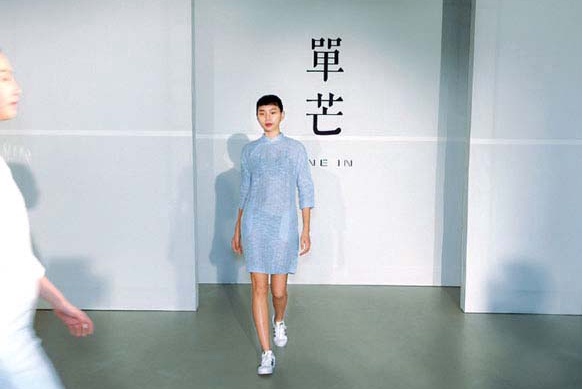
Long before the invention of the qipao, or the cheongsam, there was a similar-looking type of clothing that most Chinese wore starting from as early as the 26th century BC.
Known as hanfu, or Han clothing, this traditional robe-like attire featured loose lapels and long flowing sleeves and was often adorned in vibrant colors. While the details found on the clothing changed through the centuries, the style of the hanfu has endured even till today, with a growing number of Chinese designers turning to it for inspiration and infusing elements of it into their contemporary designs.
"The old style is monotonous and makes people think of elaborate embroidery patterns featuring dragons and phoenixes. To make it appealing to today's crowd, we need to get rid of the original frame and be innovative," said Cai Wenqiao, an integrated design undergraduate student at Parsons School of Art and Design in New York.
For her final-year project, Cai designed eight pieces of clothing that were inspired by the Chinese prose called Peach Blossom Spring by Tao Yuanming, a famous writer of the Eastern Jin Dynasty (317-420). Four of the designs are meant for daily wear while the rest are suitable for formal events.
Cai used pink as the main color for all the pieces as it represents the peach blossom. She has also included classic hanfu elements such as embroidery featuring flowers and butterflies. Silk, a common material used to make Han clothing, was also the choice fabric for the project.
Apart from the hanfu, the cheongsam is another piece of traditional wear that is frequently used as the basis of modern Chinese clothing. One of the brands that is well-known for its contemporary renditions of the cheongsam is Danmang.
Established in March 2015, the Chinese company creates a variety of cheongsam-esque clothes that can be worn for daily life, work and even sport. It also has several creations that feature hanfu elements. Danmang currently sells between 350 to 450 pieces of clothing every month.
"Customers choose our product because they want to wear clothes that combine urban style with Chinese elements such as a small collar or embroidery on the cuffs or shoulders," said An Shiliu, a co-founder and designer at Danmang.
Apart from aesthetics, another reason why Danmang's clothes are popular is because they are practical and comfortable. Traditional Han Chinese clothing and cheongsams are usually long and fall below the knee, which could make movement cumbersome, and come with tightfitting collars that could be uncomfortable.
The founders of Danmang initially thought that their target audience would be women aged between 25 and 40 years old. To their surprise, Danmang's designs have been well received by a much wider spectrum of consumers aged between 18 and 60.
Another Chinese designer who specializes in gentrifying traditional Chinese apparel is Uma Wang. After completing her studies at the China Textile University in Shanghai, Wang pursued a fashion degree at the prestigious Central Saint Martins College of Art and Design in London.
She registered her eponymous label in London in 2005 and has showcased her creations at fashion shows in Milan, London and Paris.



